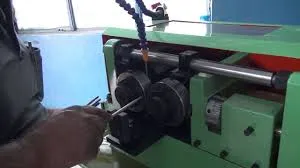
-
 Afrikaans
Afrikaans -
 Albanian
Albanian -
 Amharic
Amharic -
 Arabic
Arabic -
 Armenian
Armenian -
 Azerbaijani
Azerbaijani -
 Basque
Basque -
 Belarusian
Belarusian -
 Bengali
Bengali -
 Bosnian
Bosnian -
 Bulgarian
Bulgarian -
 Catalan
Catalan -
 Cebuano
Cebuano -
 Corsican
Corsican -
 Croatian
Croatian -
 Czech
Czech -
 Danish
Danish -
 Dutch
Dutch -
 English
English -
 Esperanto
Esperanto -
 Estonian
Estonian -
 Finnish
Finnish -
 French
French -
 Frisian
Frisian -
 Galician
Galician -
 Georgian
Georgian -
 German
German -
 Greek
Greek -
 Gujarati
Gujarati -
 Haitian Creole
Haitian Creole -
 hausa
hausa -
 hawaiian
hawaiian -
 Hebrew
Hebrew -
 Hindi
Hindi -
 Miao
Miao -
 Hungarian
Hungarian -
 Icelandic
Icelandic -
 igbo
igbo -
 Indonesian
Indonesian -
 irish
irish -
 Italian
Italian -
 Japanese
Japanese -
 Javanese
Javanese -
 Kannada
Kannada -
 kazakh
kazakh -
 Khmer
Khmer -
 Rwandese
Rwandese -
 Korean
Korean -
 Kurdish
Kurdish -
 Kyrgyz
Kyrgyz -
 Lao
Lao -
 Latin
Latin -
 Latvian
Latvian -
 Lithuanian
Lithuanian -
 Luxembourgish
Luxembourgish -
 Macedonian
Macedonian -
 Malgashi
Malgashi -
 Malay
Malay -
 Malayalam
Malayalam -
 Maltese
Maltese -
 Maori
Maori -
 Marathi
Marathi -
 Mongolian
Mongolian -
 Myanmar
Myanmar -
 Nepali
Nepali -
 Norwegian
Norwegian -
 Norwegian
Norwegian -
 Occitan
Occitan -
 Pashto
Pashto -
 Persian
Persian -
 Polish
Polish -
 Portuguese
Portuguese -
 Punjabi
Punjabi -
 Romanian
Romanian -
 Russian
Russian -
 Samoan
Samoan -
 Scottish Gaelic
Scottish Gaelic -
 Serbian
Serbian -
 Sesotho
Sesotho -
 Shona
Shona -
 Sindhi
Sindhi -
 Sinhala
Sinhala -
 Slovak
Slovak -
 Slovenian
Slovenian -
 Somali
Somali -
 Spanish
Spanish -
 Sundanese
Sundanese -
 Swahili
Swahili -
 Swedish
Swedish -
 Tagalog
Tagalog -
 Tajik
Tajik -
 Tamil
Tamil -
 Tatar
Tatar -
 Telugu
Telugu -
 Thai
Thai -
 Turkish
Turkish -
 Turkmen
Turkmen -
 Ukrainian
Ukrainian -
 Urdu
Urdu -
 Uighur
Uighur -
 Uzbek
Uzbek -
 Vietnamese
Vietnamese -
 Welsh
Welsh -
 Bantu
Bantu -
 Yiddish
Yiddish -
 Yoruba
Yoruba -
 Zulu
Zulu
Flat Die Thread Rolling Machines for Efficient Manufacturing and Precision Engineering
The Evolution and Importance of the Flat Die Thread Rolling Machine
In the world of manufacturing and metalworking, precision and efficiency are paramount. One of the critical processes for achieving high-quality fasteners and various threaded components is thread rolling. Among the various types of machines employed in this process, the famous flat die thread rolling machine has gained significant prominence due to its versatility and effectiveness.
Thread rolling is a cold working process that creates threads on a cylindrical workpiece. Unlike traditional cutting methods, which remove material to form threads, thread rolling displaces material, resulting in stronger and more durable threads. The flat die thread rolling machine operates by using flat dies to compress the workpiece, creating the desired thread profile without producing chips. This method not only enhances the mechanical properties of the threads but also minimizes waste, making it a cost-effective solution.
The design of the flat die thread rolling machine is notable for its simplicity and robustness. The machine typically consists of a pair of flat dies that are mounted parallel to each other, with the workpiece fed through the dies. As the dies press together, they impart the thread profile onto the workpiece. This method allows for the production of threads with high precision and uniformity, crucial for applications in industries such as automotive, aerospace, and construction.
One of the key advantages of using a flat die thread rolling machine is its ability to produce high volumes of threaded components efficiently. The process is significantly faster than traditional cutting methods, allowing manufacturers to meet tight production deadlines while maintaining high quality. Additionally, the machine is capable of accommodating a wide range of materials, including steel, aluminum, and other alloys, making it an adaptable choice for various manufacturing needs.
famous thread rolling machine flat die

Another significant benefit lies in the mechanical properties of the finished threads. The cold working process inherent in thread rolling increases the tensile strength of the material, yielding threads that can withstand greater loads and stresses. This characteristic is particularly beneficial in the production of fasteners that require high durability and reliability.
Moreover, the flat die thread rolling machine is known for its ease of maintenance. With fewer moving parts and a straightforward operational design, manufacturers can reduce downtime and maintenance costs, which is vital for keeping production lines running smoothly.
As industries evolve and the demand for high-quality threaded components continues to rise, the flat die thread rolling machine remains an invaluable asset in modern manufacturing. Its efficiency, adaptability, and ability to produce durable threads make it a preferred choice among manufacturers. Furthermore, advancements in technology are continually enhancing the capabilities of these machines, integrating features such as automation and precision controls that further improve production efficiency.
In conclusion, the flat die thread rolling machine has established itself as a cornerstone of threaded component manufacturing. Its unique ability to produce strong, high-quality threads efficiently makes it a crucial tool in various industries. As technology progresses, we can anticipate even greater advancements in the efficiency and capabilities of these machines, solidifying their importance in future manufacturing processes. The evolution of the flat die thread rolling machine is emblematic of the broader trends in manufacturing towards efficiency, precision, and sustainability.
